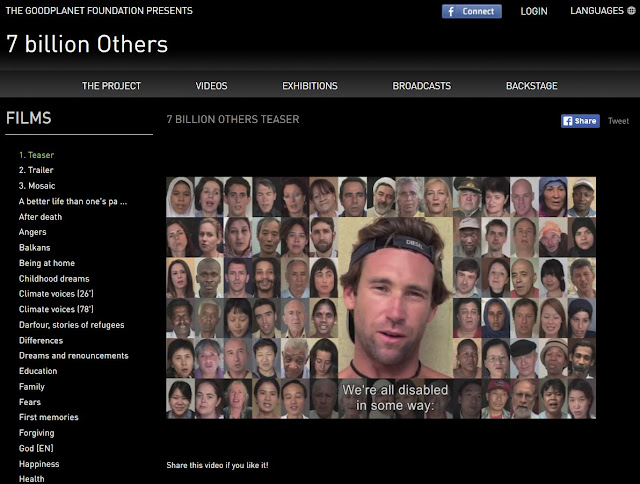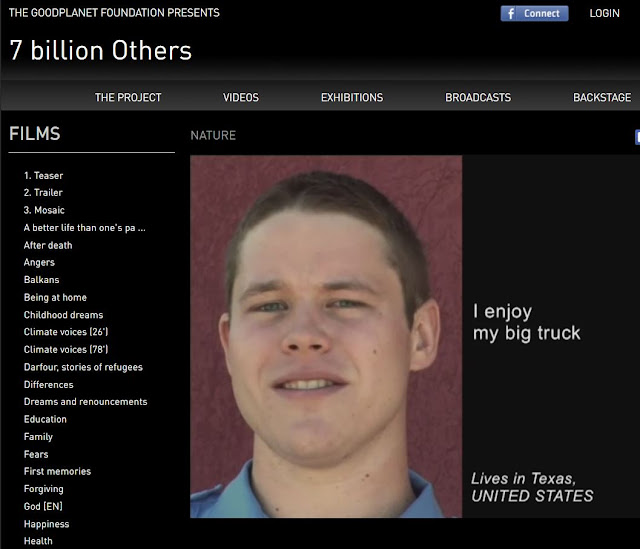I'm not sure whether other media have chimed in on what makes this Centennial special. Not to mention that we have three months left in the year. There are many other worthy events that add to the Centennial celebration.
I mention only two. I invite you to add your own nominees to this bouquet of provocative and imaginative displays.
At this time of year in San Diego, we are inspired by the San Diego Dance Theater's Trolley Dances. And this year, nearly all of the dances are in Balboa Park -- from the Zoo Centennial Walkway and Spanish Village to the famous Moreton Bay Fig Tree and the Mingei Museum.
 |
| Jill Rowe / Immigrants / featured in the Digital Art Guild's exhibit at Gallery 21 |
 |
| Trolley Dances at Spanish Village / Balboa Park / Back to Front / Choreographer: Mark Haim |
The Trolley Dances performed for two weekends - at the end of September and the beginning of October - beginning at the San Diego County Waterfront Park and ending at the Mingei Museum in Balboa Park.
Trolley Dances
The Trolley Dances, performed by the San Diego Dance Theater, has been part of San Diego's cultural landscape now in its 17th annual season. The concept embraces the urban environment: "Bring dance to the people using public transportation and introduce audiences to new neighborhoods and experiences."
 |
| Trolley Dances at San Diego Zoo Centennial Walkway / Balboa Park / Become Ocean / Choreographer: Jean Isaacs |
 |
| Trolley Dance at Moreton Bay Fig Tree / Balboa Park / Roots, Soul, and Love! / Choreographer: Suzanne Forbes-Vierling |
 |
| Trolley Dances at the Mingei Museum / Balboa Park / Giving Way / Choreographer: Anne Gehman |
The dances take the audience to different locations to experience the dances in a variety of urban contexts. This year the starting point was the San Diego County's Waterfront Park (which was formerly two large parking lots on either side of the County Administration building).
 |
| Trolley Dances at San Diego County Water Front Park, North Fountain Reflecting Pool / Play(as): Choreographer: Stephan Koplowitz |
 |
| Trolley Dances at County Waterfront Park / Blue Stillness / Choreographer: Liv Isaacs-Nollet |
If one digs back into the history of Balboa Park, back to 1915-16, one can see the spirit of fanciful design already at work. A.J. Roberts' painted a gondola-filled lagoon with the Park's memorable bridge and California Tower in the background. The painting is now on exhibition at the San Diego History Center.
That same sense of imagination is reflected in the 102nd memory of the Balboa Park Centennial - the Digital Art Guild's Looking Back, Looking Forward exhibit opening on November 4th at Gallery 21 in Spanish Village.
Digital Art Guild at Gallery 21/Spanish Village
What makes Balboa Park special? Yes, there are the institutional museums, theaters and amazing outdoor organ pavilion.
But there are those smaller niche spaces that invite discovery for the millions that come to the park.
One of those spaces is Spanish Village. Amongst the individual artist studios is Gallery 21. This space hosts a variety of art groups and individual artists - part of an annual juried process.
The Digital Art Guild considered how its exhibit might celebrate Balboa Park's Centennial. There are parks on Alpha Centauri (yes, digital art was borne of varied interests including fantasy and sci-fi, but also ways of reinventing traditional art styles).
How best to keep an open mind about the park? The Guild decided on a theme of looking forward, looking back - providing a sense of continuity from the deep past into the unknown future.
Looking Back, Looking Forward provokes the visitor to imagine what the park has been, what it is and what it might be.
The Digital Art Guild exhibit runs from November 4 to November 16, 2015.
Open daily from 11 am to 4 pm. Artist reception, Saturday, November 7th from noon to 4 pm.
 |
| Tony Velez / Games of Emotion (Left) / John Valois / Park Muse (Right) |
What comes to mind for a digital artist? Perhaps not that different from what many artists experience - though the tools and style may.
Tony Velez speaks for many of us: "I am passionate about light, color, nature, music, and love. The artwork that I create is balanced against the hectic pace of my work and reflects my own personal journey of soul recovery and spiritual development. An unusual life creates an unusual artist. I take chances and ask you to feel something inside as you reflect on my pieces. I love what I do. . ."
 |
| Robert Pendleton / Wish You Were Here (Upper); Charlie Anne Breese / Spinning Fire (Lower) |
 |
| Richard ChauDavis with ACE / I See You (Left); Ron Belanger / Bowling at New Balboa Park (Right) |
You might wonder whether I've taken more poetic license than I should: Isn't this exhibit about Balboa Park? Well, for us, that is our own Eden, our own Garden. We can only imagine what happened on these grounds before and the conversations that emerged.
 | |
| Joe Nalven / What Becomes Eden (premiere) / screen shot of dance video at Gallery 21 |
















